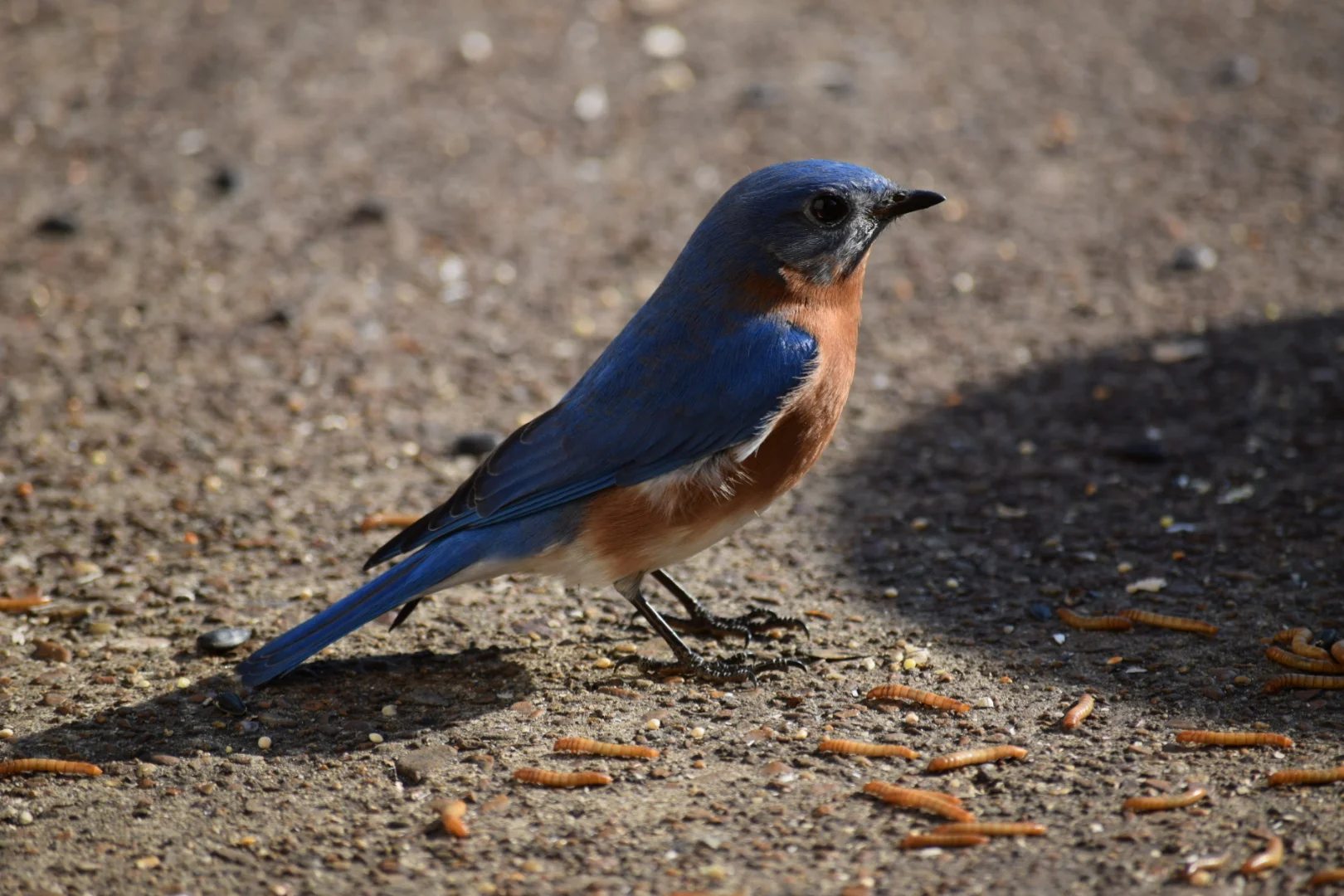Male Bluebird
Female Bluebird
The Eastern Bluebird is a year round species in Tennessee that everyone would love to attract. Due to significant population growth over the past 10 years it is more possible than ever for people to attract these beautiful birds. The Bluebird is most associated with fields, meadows, and open habitat. However, when spring is approaching and their attention turns to courtship and nesting they leave the open areas and spread out in search of potential nest-sites. Their search often takes them into suburban and wooded areas, places not usually associated with Bluebirds. Bluebirds are insects and berry eaters, but will occasionally accept alternative food sources like sunflower hearts and shelled peanuts, suet, raisins, dried mealworms, and of course live mealworms.
Placement of Nest-boxes
The best way to attract Bluebirds is to offer nest-boxes. One is good, but two is better. There is often competition from other species for a nest-box and Bluebirds can sometimes be indecisive. Offering two nest-boxes in the best spots your yard has to offer increases your chance of success. Choose an area most suitable to Bluebirds. Placing the nest-box adjacent to or in an open lawn area is preferable. The direction it faces is not critical. Facing it away from prevailing weather patterns can be helpful. Mounting the nest-box on a pole about five feet high is perhaps the best option, but mounting to a fence, outbuilding, or tree will work, too. If you choose a tree make sure the canopy of the tree is well above the nest-box. As a general rule place nest-boxes at least one hundred feet apart or out of sight of one another.
Other desirable species of birds that will use a Bluebird nest-box are: Carolina Chickadee, White breasted Nuthatch, Tufted Titmouse, Carolina Wren, House Wren, Tree Swallow, and Prothonotary Warbler. We urge people to allow these birds to use the nest-box. Evicting these birds by cleaning out their nests does not guarantee you will get Bluebirds and goes against our philosophy of bird watching. Furthermore, it is against the law. The House Sparrow is the only bird we do suggest you make every attempt to keep from using the nest-box. They are an introduced species that may fight to the death for nesting rights.
Nesting
Bluebirds nest two to three times per season between the months of March and August. The first nest may take weeks to build, but later nests may take only a day or two. The preferred nest material is pine straw and fine grasses. Bluebirds lay three to six light blue, sometimes white, eggs. One egg is laid per day until completion and then incubation begins. Incubation takes 12-14 days. The fledgling period then begins in which the babies will develop quickly. In another 14-16 days the fledglings will be ready to leave the nest.
Monitoring is a safe and easy practice. A quick peek in the nest-box every day or two helps to learn about the process and will not upset the birds enough to cause them to abandon the nest. For more information about Bluebirds visit: www.nabluebirdsociety.org/
FEEDING BLUEBIRDS
Feeding Bluebirds is a little different than feeding seed eating birds. Bluebirds are primarily insect and fruit eaters. We suggest live mealworms, but dried mealworms can work, too. Here are our suggestions for geting started feeding Bluebirds.
Wait until the Bluebirds are showing interest in a nestbox, or are showing up regularly at a birdbath or other water source. They must be there to see the mealworms. Pay attention to the timing of their visits.
When you see Bluebirds attempt to offer the mealworms, or other food source, while they are there to see you make the offering. This is very important because after three or four times they will associate you with the food treat. Initially, offer small amounts so as not to attract the attention of other birds. The longer the mealworms are there the more chance other birds, like Robins and Mockingbirds, have of discovering the treat. If this happens you will have difficulty feeding Bluebirds and not the others. As you get the Bluebirds "on schedule" you can offer more per serving.
You may see them eat seeds that are shelled like sunflower hearts or peanut pieces, in the winter and early spring.







